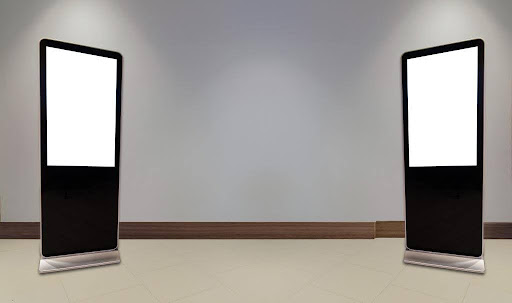In the digital age, a website often serves as the first point of contact between a brand and its potential customers. This digital handshake can either make or break impressions, setting the tone for further interactions.
With an overwhelming amount of information and choices available at our fingertips, users today have little patience for subpar web experiences. A well-designed website isn’t just about aesthetics; it’s a harmonious blend of functionality, responsiveness, and user-centricity.
Whether you’re an established brand in need of web design services or looking to revamp your site, understanding the principles of effective web design is crucial.
Table of Contents
1. Clarity Over Clutter
In the quest to make a website visually appealing, it’s tempting to incorporate numerous elements, animations, and graphics. However, less is often more in web design.
A cluttered website can confuse visitors, diluting the primary message and making navigation a challenge. Clean designs, on the other hand, prioritize content and direct user attention effortlessly.
Whitespace, or negative space, isn’t just an empty area but a powerful tool that can enhance readability and focus. By stripping away unnecessary elements and embracing simplicity, you pave the way for a website that communicates effectively, ensuring that visitors stay engaged and receive the information they seek with ease.
2. Responsive Design is Non-Negotiable
The diverse array of devices we use to browse the web today, from desktops to smartphones and tablets, makes a responsive design paramount. A website that looks great on a laptop but is misaligned or unreadable on a mobile device can frustrate users and lead to missed opportunities.
Responsive design ensures that your website’s layout, images, and functionalities adjust seamlessly to different screen sizes, providing a consistent user experience across devices. Moreover, search engines like Google prioritize mobile-friendly sites, making responsiveness not just a matter of user satisfaction but also of visibility in search results.
3. Prioritize Load Time
User patience is a fleeting commodity in the online realm. A few extra seconds in loading can lead to significant bounce rates, with studies showing that a mere 2-second delay can increase abandonment by over 40%.
Therefore, optimizing your website’s load time isn’t a mere suggestion—it’s a necessity. Every element, from high-resolution images to intricate scripts, contributes to the loading speed.
Employing techniques like image compression, minimizing code, and using content delivery networks can drastically reduce wait times. Remember, in the digital landscape, speed is synonymous with efficiency, and users gravitate towards websites that value their time by loading swiftly and smoothly.
4. Visual Hierarchy: Lead the Eye
A well-structured visual hierarchy is the silent guide that directs your visitors through the content journey on your site. It determines the order in which users process information, emphasizing what’s crucial and subtly downplaying less vital elements.
Elements like size, color, contrast, and placement play pivotal roles in establishing this hierarchy. For instance, larger, bolder headlines grab attention before smaller subtext.
Strategically placed CTAs (Call to Actions) can entice users to take desired actions. Ensuring an effective visual flow not only enhances user experience but also ensures that your primary messages don’t get lost in the shuffle, maximizing the impact of your content.
5.Accessibility for All
Inclusivity in design goes beyond mere aesthetics—it’s about ensuring that everyone, regardless of their abilities, can access and navigate your website with ease. Web accessibility ensures that people with disabilities, including visual or hearing impairments, can engage with online content.
Implementing features like keyboard navigation, screen reader compatibility, and contrast-rich color schemes are steps in the right direction. Adhering to the Web Content Accessibility Guidelines (WCAG) is not just a commendable practice but is becoming a legal necessity in many jurisdictions.
By designing with accessibility in mind, you broaden your audience reach, promote inclusivity, and foster a digital environment where everyone feels valued.
6.Consistent Branding and Typography
Your website is an extension of your brand, and thus, it should echo your brand’s identity consistently. Every element, from color schemes to logo placements, should reinforce brand recognition.
Typography, often an unsung hero in design, plays a crucial role in maintaining brand consistency and setting the tone for user interactions. Choosing the right fonts and maintaining a consistent font hierarchy helps in improving readability and offers a cohesive visual experience.
Avoid the temptation to mix multiple fonts, as it can create visual chaos. Instead, opt for font pairings that reflect your brand’s voice and ethos, creating a seamless and memorable user journey.
7.Quality Over Quantity: Imagery and Multimedia
A picture speaks a thousand words, but only if it’s of high caliber. The imagery and multimedia elements you select can elevate your website’s appeal, offering visual breaks and supporting your content narrative. However, it’s essential to prioritize quality over sheer quantity.
Opt for crisp, relevant images that align with your brand and resonate with your audience. Videos, when used judiciously, can amplify engagement levels, but they should be optimized to prevent lagging load times.
Remember, every visual element should have a purpose, whether to elucidate a concept, evoke emotions, or guide user attention. Choose wisely, ensuring every image or video enhances, not detracts from, the user experience.
8.Navigation Should be Intuitive
Navigating a website should feel like a breeze, not a maze. An intuitive navigation structure allows visitors to find what they’re looking for effortlessly, enhancing user satisfaction and prolonging site engagement.
Common patterns, such as top horizontal menus or hamburger menus for mobile versions, have become standards due to their effectiveness. Ensure that essential pages are easily accessible, and avoid burying crucial information under multiple layers.
Breadcrumbs can further assist users in understanding their location within your site. A well-thought-out navigation design reduces user frustration, decreases bounce rates, and ensures that visitors can traverse your digital space with ease and efficiency.
9.Test, Analyze, and Iterate
Web design isn’t a one-and-done process. As user behaviors evolve and new design trends emerge, continual adaptation is key.
Regularly testing different design elements and layouts can provide invaluable insights into what truly resonates with your audience. Tools like A/B testing can highlight which version of a page drives more conversions or engagement.
Analytics offer a deeper dive into user interactions, pinpointing areas of improvement. Based on these insights, making iterative changes ensures your website remains optimized for user experience.
10.SEO-Friendly Design
A beautifully designed website is only as good as its visibility. Search Engine Optimization plays a pivotal role in ensuring your site ranks well on search engines, drawing organic traffic.
While much of SEO focuses on content, aspects of web design can significantly influence search rankings. For instance, a mobile-responsive design, fast load times, and well-structured URLs are all design-related factors favored by search engines.
Alt-text for images, clean code, and an XML sitemap further boost your site’s SEO. By integrating SEO best practices into your design process, you not only create an aesthetically pleasing website but also a discoverable one, amplifying your reach and impact.
Conclusion
In today’s digital landscape, a website stands as a brand’s virtual storefront, reflecting its ethos, offerings, and commitment to user experience. Prioritizing clarity, responsiveness, and user-centricity can transform a website from a mere digital presence to a potent business tool.
By integrating these essential web design tips, from visual hierarchy to SEO optimization, brands can craft digital spaces that captivate, engage, and convert.
Remember, a successful website isn’t just about aesthetics; it’s about creating a seamless and enriching journey for every visitor. Embrace these principles, and watch your online presence flourish.





